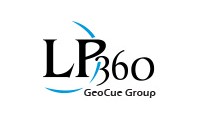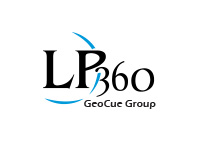GeoCue Support » LP360 Geospatial » LP360 Geospatial Tools, Tips and Workflows » Page 26
In previous articles of GeoCue News we covered how the Volumetric Analysis Tool within LP360 works, and how it can be used within a project, LP360 Under the Hood: Volumetric Analysis and Volumetrics – Do it Right!, respectively. We’re often asked how accurate or reliable the volumetric results can be expected to be. In this…
User receives an error message stating, “The application was unable to start correctly (0xc0000142).” when attempting to launch LP360 for Windows (32-bit or 64-bit). The error concerning the application being unable to start correctly is likely occurring due to either: another program using the same DLL’s as LP360, a virus, or Group Policy Objects. Option…
LAS v1.4 introduced the concept of the Overlap classification flag. Since this new flag did not previously exist in the classification code byte, the class offsets discussed here do not apply to the Overlap classification flag. A user would need to have both LP360 and TerraScan in order to properly identify and flag overlap points.…
If you are involved in airborne LIDAR workflows in North America, you will immediately understand the value of supporting LAS Version 1.4, Point Data Record Format 6 for your end-to-end workflow as this will be the required deliverable format for the USGS 3D Elevation Program. Of course, this will drive all standard airborne LIDAR deliverables…
In the new ASPRS Positional Accuracy Standards for Digital Geospatial Data, low confidence areas within LIDAR data are defined to be where the bare earth model might not meet the overall data accuracy requirements. Generally speaking with LIDAR data this can occur where there is heavy vegetation that causes poor penetration of the pulses. If…
The USGS LIDAR Base Specification refers to Spatial Distribution and Regularity. It describes an assessment that is done, in addition to general point density assessments, to determine the regularity with which the a LIDAR point data collection is executed. The density images that allow one to follow the USGS specification for making the assessment can be…
The LP360 Sketch Tool is a custom ArcGIS™ sketch tool that adds custom functionality to the out-of-the-box ArcGIS sketch tool. The LP360 sketch tool operates the same as the ArcGIS sketch tool. The LP360 Sketch Tool is only available in LP360 for ArcMap. The LP360 Sketch Tool can use the ArcEditor snapping options in the…
With the latest release of LP360 (2014.1) the No Points option is no longer a selection in the LIDAR Layer Draw Tools legend. A no points display is now accomplished by simply toggling the Display Legend button on or off (Figure 1). This is also the case for the 3D View, The Profile View, and…
In the previous articles we provided an introduction to coordinate systems, geoids, datums and projections. This background information was needed in order to delve into more details on transformations and changing projections in the various software packages to help you do more with LIDAR data. This article will provide the information into transformations and changing…
When drawing polygons it definitely matters if they are drawn clockwise or counterclockwise. Why you ask? Well, because polygons have a “sense” of direction. The right hand side of the vector used to draw a polygon is considered to be the “inside.” If you draw your polygon clockwise the right-hand side of the vector becomes…

